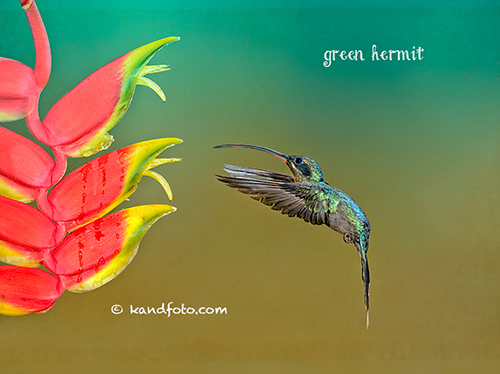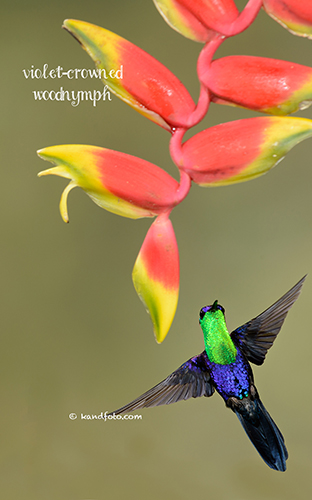I just recently returned from Costa Rica where I participated in Glenn Bartley’s Nature Photography workshop touring this beautiful country with such a diverse eco-system. Cattle, coffee, birding, scuba diving, fishing, eco-tourism . . . there is something for everyone. In a country no larger than West Virginia, Costa Rica boost 875 recorded avian species. And, for a non-bird photographer, that’s a heck of a lot of birds.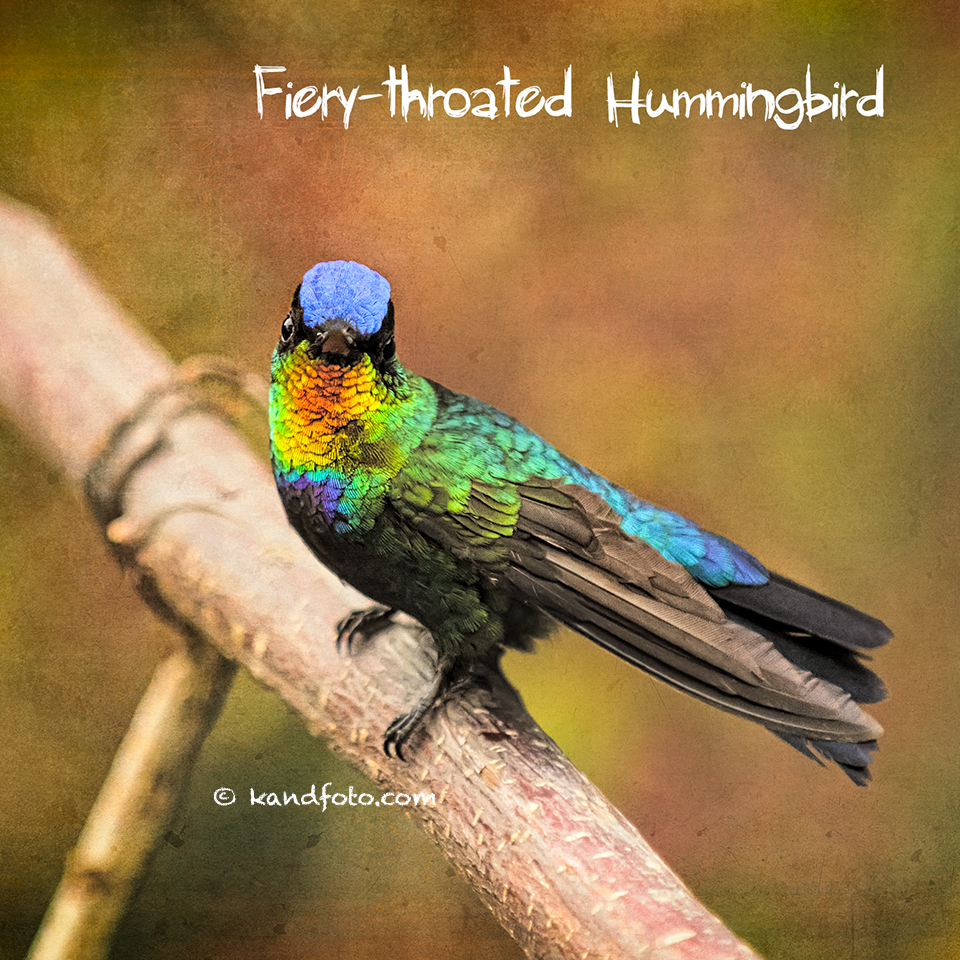 You ask . . . why would I go on a bird photography tour if I’m not a bird photographer? And, that’s what others on the trip asked as well. Its the hummingbirds . . . I LOVE hummingbirds. But I was also after the elusive Resplendent Quetzal. A bird that will challenge any good bird photographer. But I digress . . . The hummers of Costa Rica are all over the map in color spectrum and variety. The three resorts we stayed had at least four to five, maybe more, different species. And did I mention the reptiles, deadly snakes, lizards, howler monkeys, spider monkeys abound. This country has it all . . .
You ask . . . why would I go on a bird photography tour if I’m not a bird photographer? And, that’s what others on the trip asked as well. Its the hummingbirds . . . I LOVE hummingbirds. But I was also after the elusive Resplendent Quetzal. A bird that will challenge any good bird photographer. But I digress . . . The hummers of Costa Rica are all over the map in color spectrum and variety. The three resorts we stayed had at least four to five, maybe more, different species. And did I mention the reptiles, deadly snakes, lizards, howler monkeys, spider monkeys abound. This country has it all . . .
Selva Verde Lodge
Our first stop was in the lowlands, the jungle more or less. It was hot and humid, it’s a jungle for pete sakes. Glenn warned us of the deadly fer de lance snake and told us to stay on the nature trails. Of course, while hunting for the green and black poison dart frog and the strawberry poison dart frog that was always on my mind. I’m deathly afraid of snakes. And, for good reason, I have spent a “short” period of time in a photo blind with an 8-foot rattler in South Texas.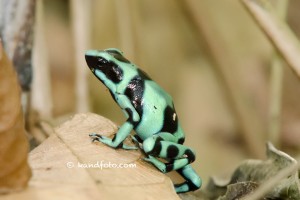 It was raining the morning I went out hunting for frogs. I brought both cameras, the Nikon D800 (thanks Jackie for the loan) with the 70-200mm lens attached and the Nikon D7000 with my 60mm macro lens. At first there was not a frog in sight. But, just as the rained stopped, frogs were everywhere. Green and Black Poison Dart frog and the Strawberry Poison Dart frog are toxic, and can make a human ill if touched.
It was raining the morning I went out hunting for frogs. I brought both cameras, the Nikon D800 (thanks Jackie for the loan) with the 70-200mm lens attached and the Nikon D7000 with my 60mm macro lens. At first there was not a frog in sight. But, just as the rained stopped, frogs were everywhere. Green and Black Poison Dart frog and the Strawberry Poison Dart frog are toxic, and can make a human ill if touched. 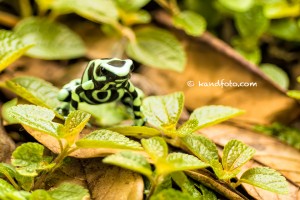
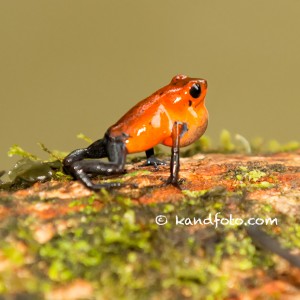 Because the red-eyed tree frog is a nocturnal amphibian, and there was a “no flash” rule, Glenn setup a small impromptu studio with a clean background and some leaves to photograph the frog during the day.
Because the red-eyed tree frog is a nocturnal amphibian, and there was a “no flash” rule, Glenn setup a small impromptu studio with a clean background and some leaves to photograph the frog during the day. 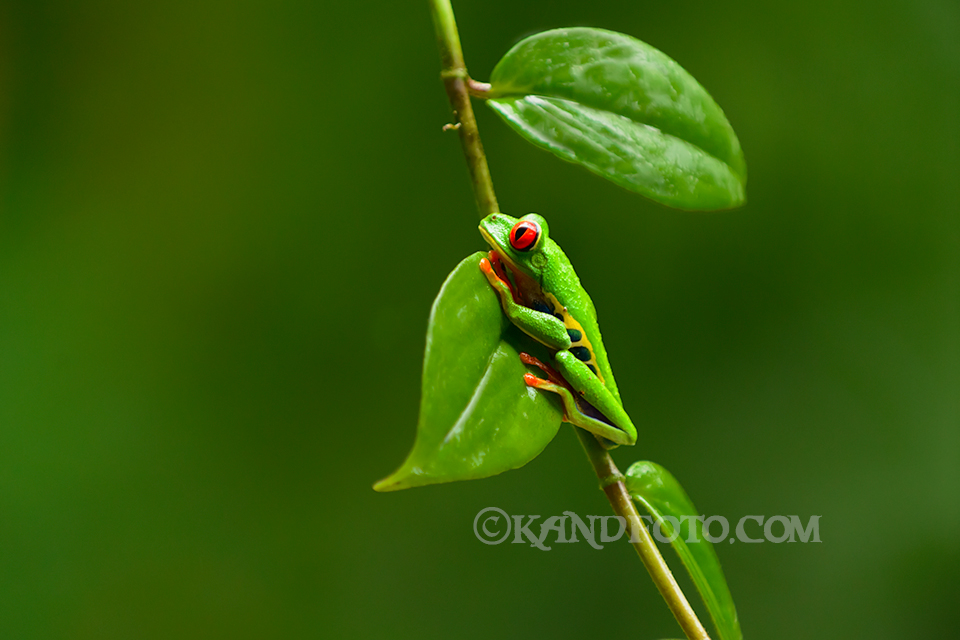 His assistant and our Costa Rican guide, Jose, had to wake up our little night creature so we could photograph him. During daylight hours, they close their eyes and hide under a huge leaf, usually around a pond making them much more difficult to find. But at night, they can be spot fairly easy, especially with a flashlight. But like photographing the mandarinfish, you should not expose them to the light for very long. Its just not birds as you can see . . . we had ample opportunities to photograph a variety of reptiles. The Common Basilisk lizard was one of the more interesting ones, with his funny looking frog-like feet.
His assistant and our Costa Rican guide, Jose, had to wake up our little night creature so we could photograph him. During daylight hours, they close their eyes and hide under a huge leaf, usually around a pond making them much more difficult to find. But at night, they can be spot fairly easy, especially with a flashlight. But like photographing the mandarinfish, you should not expose them to the light for very long. Its just not birds as you can see . . . we had ample opportunities to photograph a variety of reptiles. The Common Basilisk lizard was one of the more interesting ones, with his funny looking frog-like feet. 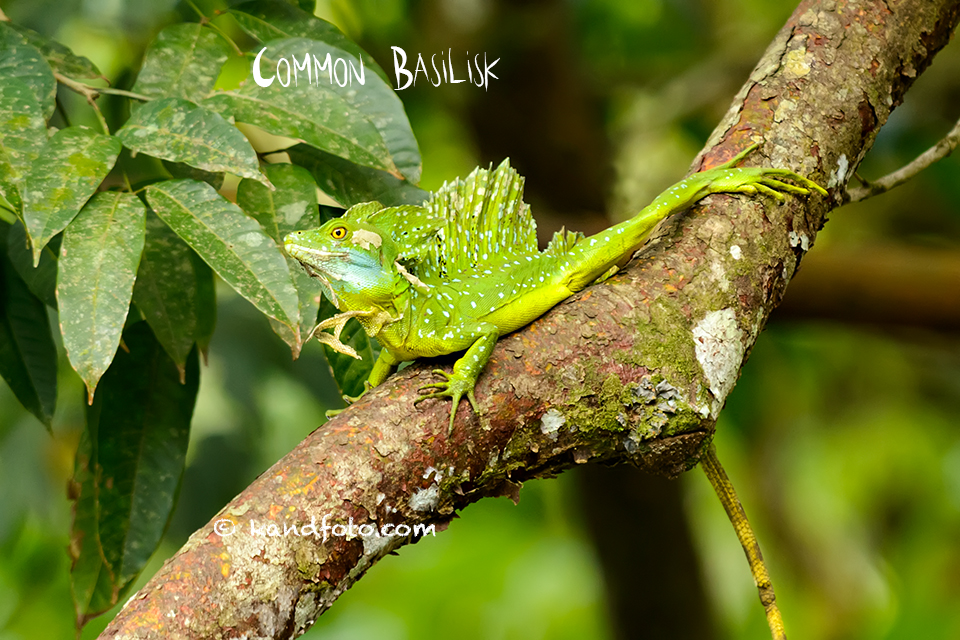
Jose got wind of the location of a nesting pair of Chestnut-mandibled Toucans, so off we went to see what we could see . . . 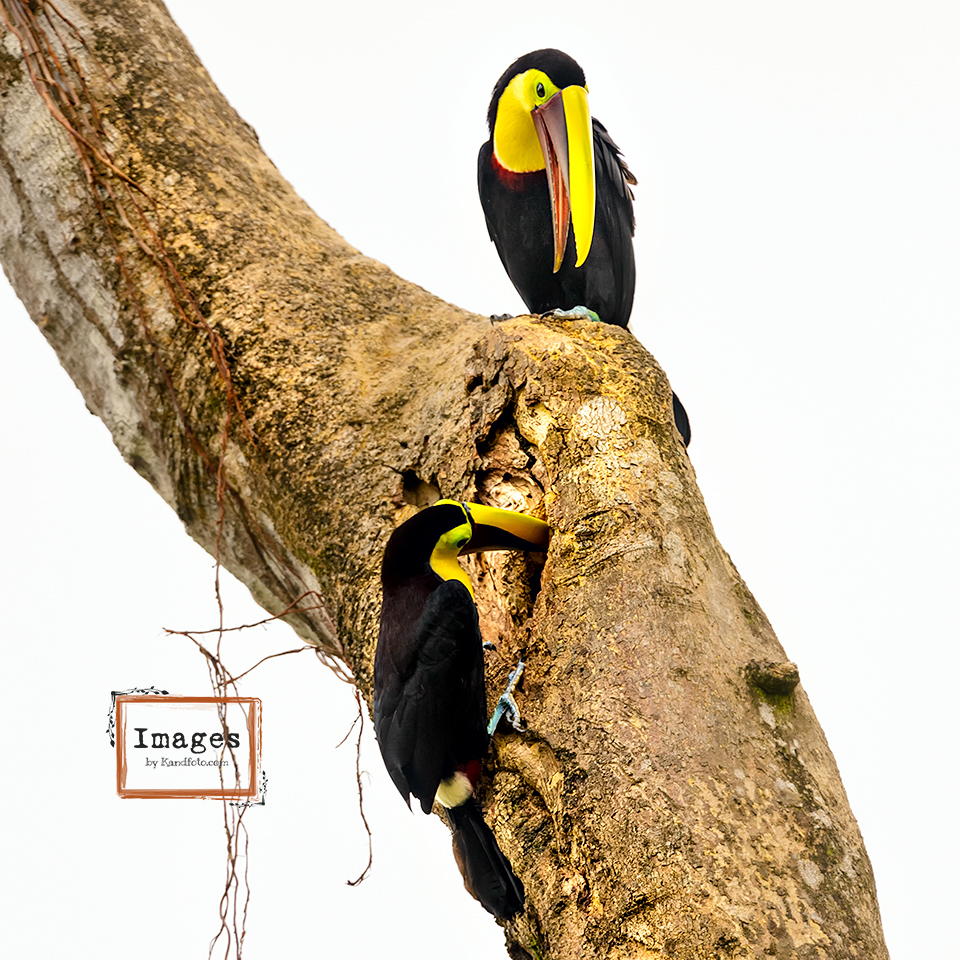 In the process of photographing the toucans, we found a small hummer nest with newborn babies. Oh my, what a sight to behold. These very small creatures no bigger than a human fingernail huddled together at the bottom of a nest just slight bigger than a human fist. I wanted to take a photo but we didn’t think it would be a good idea so we left them unharmed and just marveled at how small these little birds are. And, just when you think you understand nature, she throws a curve at you and so you stand there scratching your head, asking why? While we were observing the hummingbird babies, one of the student researchers studying plant and flower behavior at a complex nearby showed us a brilliantly orange flower growing on a tree trunk. I was told that this is the Brownea macrophylla, a tropical tree that grows flowers directly on trunk without the use of stems.
In the process of photographing the toucans, we found a small hummer nest with newborn babies. Oh my, what a sight to behold. These very small creatures no bigger than a human fingernail huddled together at the bottom of a nest just slight bigger than a human fist. I wanted to take a photo but we didn’t think it would be a good idea so we left them unharmed and just marveled at how small these little birds are. And, just when you think you understand nature, she throws a curve at you and so you stand there scratching your head, asking why? While we were observing the hummingbird babies, one of the student researchers studying plant and flower behavior at a complex nearby showed us a brilliantly orange flower growing on a tree trunk. I was told that this is the Brownea macrophylla, a tropical tree that grows flowers directly on trunk without the use of stems.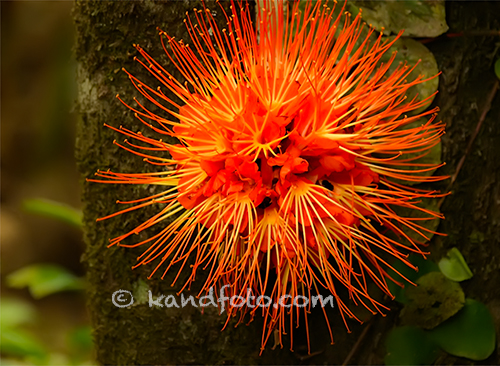
I was lucky to get this Collared Aracari toucan, hanging around the trees near the restaurant at our resort.
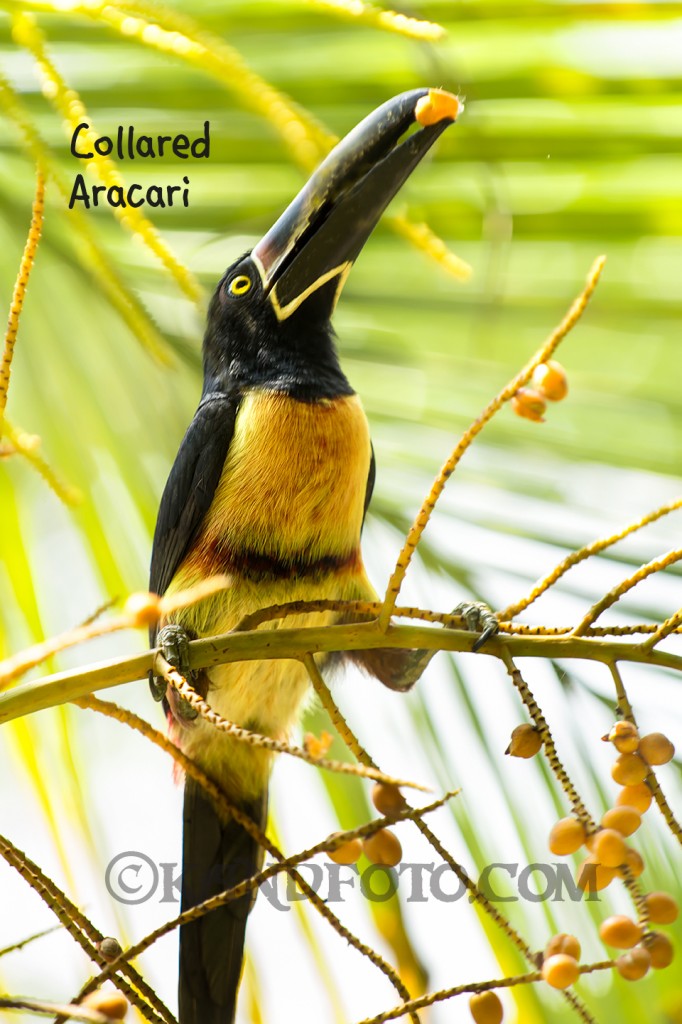
A real treat for me was our adventure to photograph wild macaws. Having parrots as part of my family, this gave me such a delight to see them flying free, perched on limbs, grooming each other and squawking in a language all their own. We visited a fairly large cattle and horse ranch. The rancher built a large aviary when people started bringing him rescue birds. Over the years, he has brought in other rescue animals and wildlife. Some cannot be rehabilitated into the wild so they live on the ranch. Now, he gets flocks of wild macaws, parrots and parakeets flying in to checkout whats for dinner.
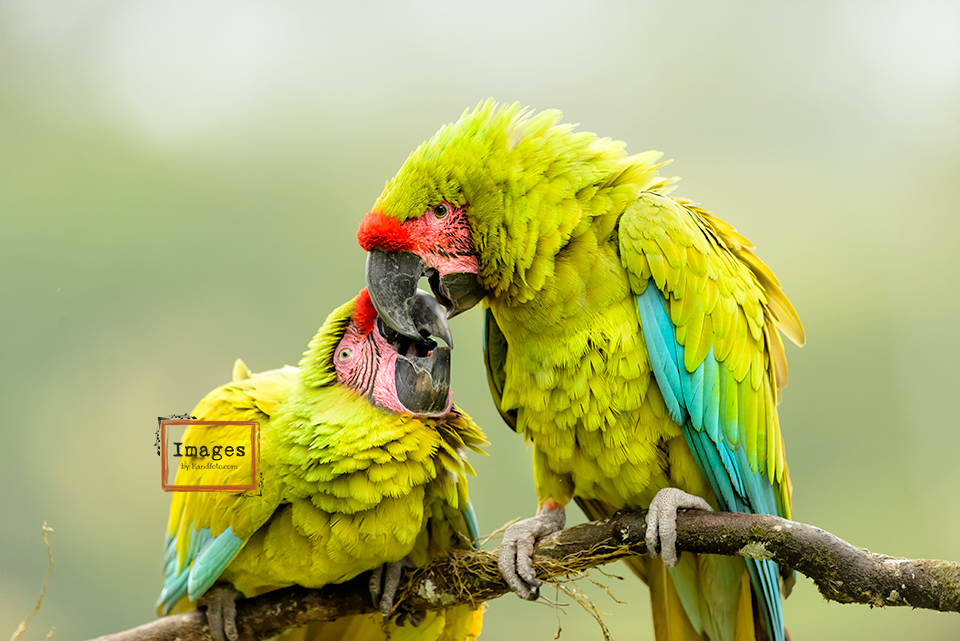
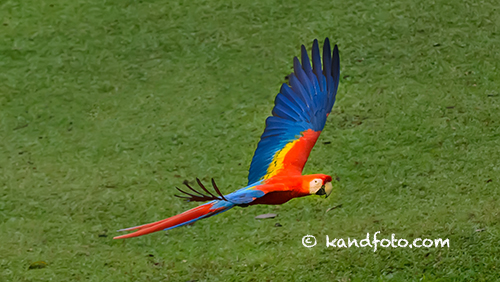
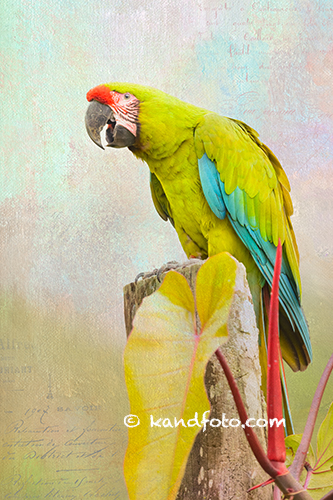
Gems of Costa Rica: Hummingbirds
As many of their common names imply, i.e., mountain gem, violet sabrewing, fiery-throated, emerald, hummingbirds are veritable avian jewels. Although these speedy characters are found in virtually every habitat in Costa Rica, the greatest species diversity occurs at middle elevations. Noted from “The Birds of Costa Rica,” by Richard Garrigues and Robert Dean, some Costa Rican hummingbird species are indigent to specific regions.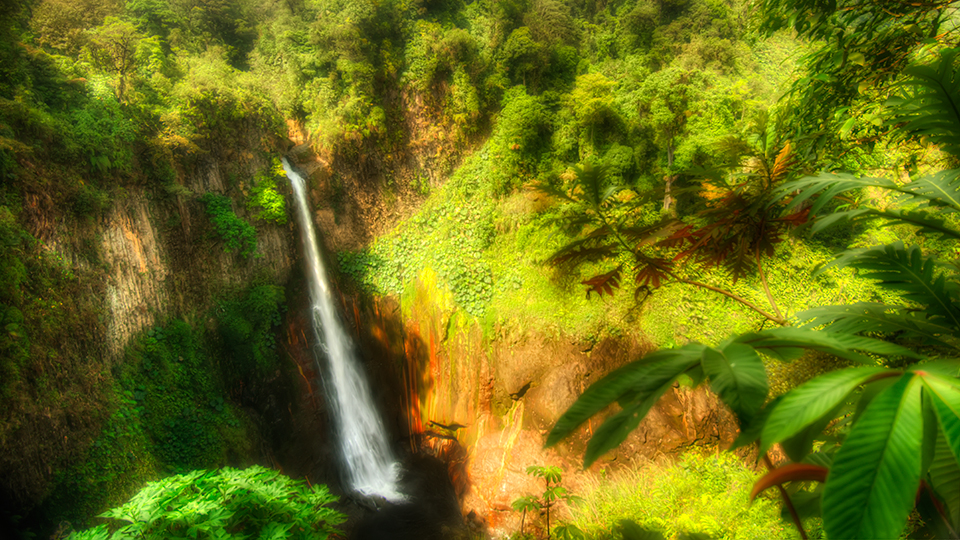
Even though we were based in the lowlands, we spent one day at a slightly higher elevation photographing hummers at a lovely restaurant. The owner had feeders everywhere and even along a nature trail, which led to a spectacular waterfall. Any where you walked, hummingbirds were abound fluttering around your head. Two that I found only at this elevation was the Violet Sabrewing and the Green Hermit. The male Violet Sabrewing exhibits a glittering-violet breast and head. Isn’t he a beautiful shade of violet-blue? 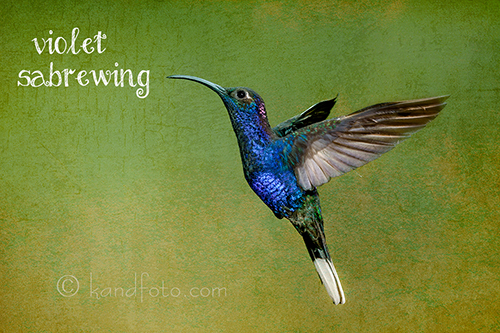
As we waited our turn to photograph at the multi-flash stations, I roamed the grounds just amazed at the beauty that this country represents . . . the flowers, the birds, the geography, etc.
Rancho Naturalista
Our second location was Rancho Naturalista, located at an elevation of 4800 feet along the mountainside of the cloud forest. Every afternoon the misty clouds swept over the valley producing mystical vistas. The American owners setup bird feeders and hummingbird feeders throughout the property. There was never a lack of birds to photograph. Every morning, I had my coffee out on the veranda while enjoying both the vista of the cloud forest, the chatter of a flock of parrots, and the humming noise of hummingbirds getting an early start on breakfast. At this higher elevation, we needed warmer clothes. Actually, the weather was perfect, not too cold and not too hot. 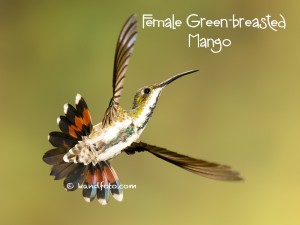 We hiked up to a platform where we got a rare opportunity to see the hummingbirds bathing in the natural pools below. Unfortunately, it was impossible to photograph since the ponds were at a lower level 200+ feet below the platform.
We hiked up to a platform where we got a rare opportunity to see the hummingbirds bathing in the natural pools below. Unfortunately, it was impossible to photograph since the ponds were at a lower level 200+ feet below the platform.
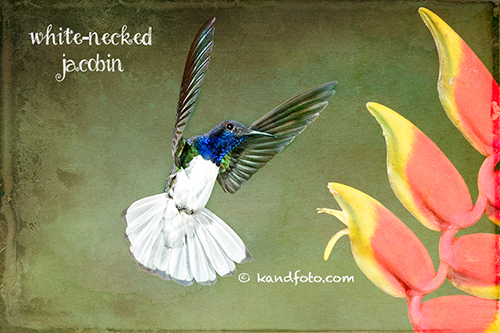
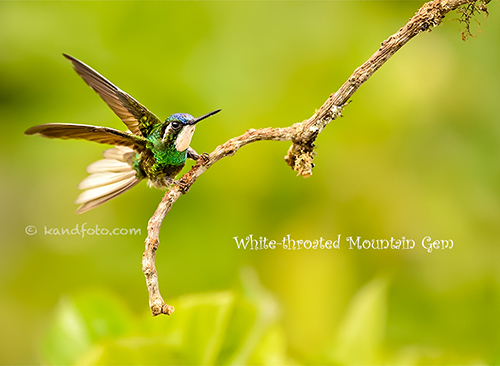
This lodge was an absolute delight. The American who owns it just exploded with friendliness and kindness. The lodge itself is relaxing, and the food is delicious. Every night we sat outside on the terrace for a scrumptious meal. Our room was comfortable, spacious, and most important, clean. And, then you add the hummingbirds, nature trails, beautiful vistas, and other birds in the mix, well, your in heaven. And, speaking of other birds, I did manage to get some nice photos at this location . . .
Savegre Natural Reserve and Spa
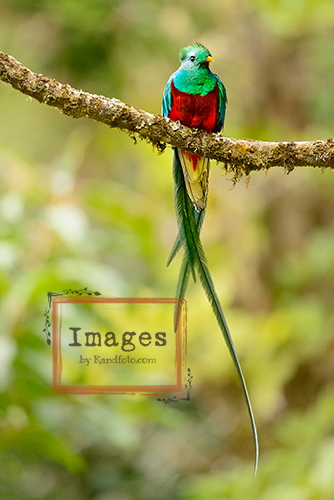 At our last stop, Savegre Natural Reserve and Spa, nestled in a picturesque valley high in the beautiful mountains surrounded by colourful, cultivated gardens, offered me the chance to photograph the elusive Resplendent Quetzal. Shortly after arriving in the late afternoon, Glenn was able to find a nesting pair of Quetzals. These birds are highly protected. You cannot flash the bird, and talking must be kept to a quiet whisper if any. At first, we could only see his 30” tail sticking out of the hole in the tree trunk. I had to bump up the ISO since dusk was quickly approaching, and we were losing light. Finally, he stuck his head out, flew out and landed on a nice clean branch with a clean background.
At our last stop, Savegre Natural Reserve and Spa, nestled in a picturesque valley high in the beautiful mountains surrounded by colourful, cultivated gardens, offered me the chance to photograph the elusive Resplendent Quetzal. Shortly after arriving in the late afternoon, Glenn was able to find a nesting pair of Quetzals. These birds are highly protected. You cannot flash the bird, and talking must be kept to a quiet whisper if any. At first, we could only see his 30” tail sticking out of the hole in the tree trunk. I had to bump up the ISO since dusk was quickly approaching, and we were losing light. Finally, he stuck his head out, flew out and landed on a nice clean branch with a clean background.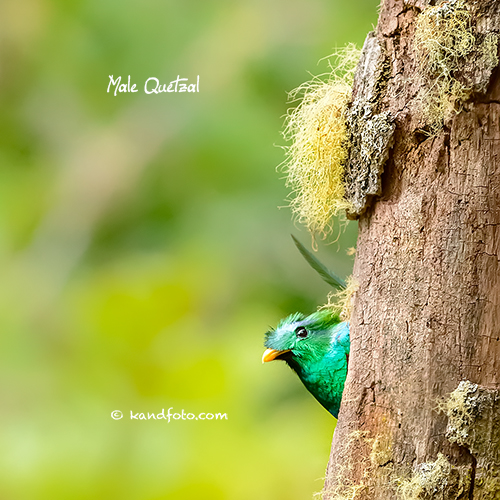
I was elated with joy. I was running around hugging everyone in sight but quietly. We were extremely lucky since these birds live in heavily wooded areas. He stayed there until the female Quetzal flew in to take her place on the nest. My group, including Glenn, were certain, I would change to a bird photographer after this life changing experience . . . but . . . I’m afraid excluding this beauty and my hummers, it’s still “bird on a stick.
The Hummers of the Highlands
One of the most coveted hummingbirds in Costa Rica is the Fiery-throated, which is endemic to Highland zone (photo shown at beginning of blog). The Savegre Lodge maintains beautiful grounds of natural flowers for hummingbirds. I love the Green Violet-ear hummingbird for his feistiness. He displays his “ears” when agitated or during mating seasons.
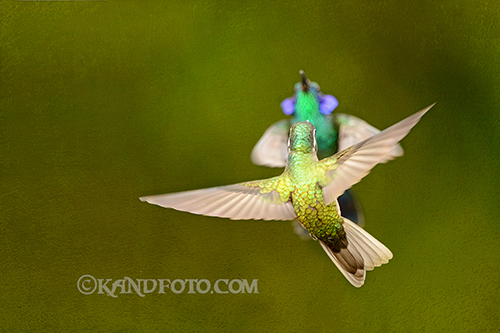
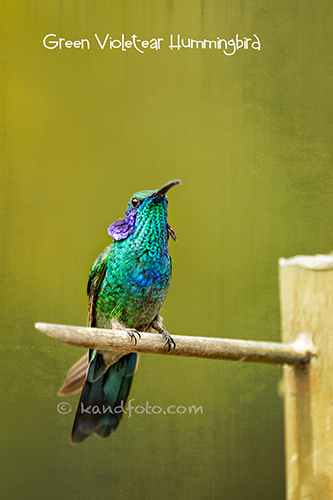
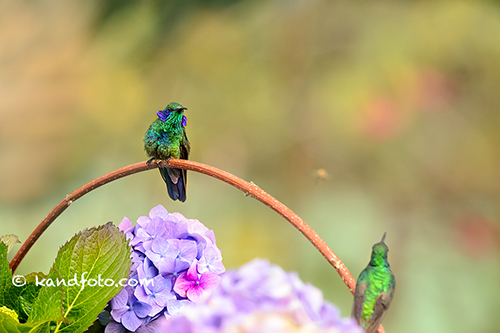
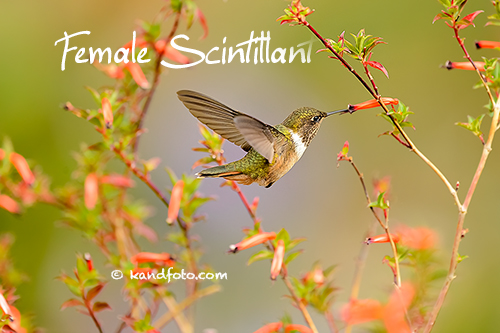
Fly Fishing: Costa Rican Style
I can’t do a blog on Costa Rica without showing off some of Jim’s fishing photos. After all, we try to combine photography with fly fishing wherever we travel. Jim was able to fly fish in two locations, in the lowlands and at the stream flowing beside Savegre Lodge. The fish are much smaller than what he is use to catching in Alaska and in Africa. We have already made plans to return to Costa Rica in 2015. One of my major stops will be Arenal Volcano, near Lake Arenal where, you guessed it, Jim will be fishing for the very large peacock bass. The photo below was taken by our trip leader, Glenn Bartley. The other two photos were taken by Jim’s Costa Rican fishing guide.
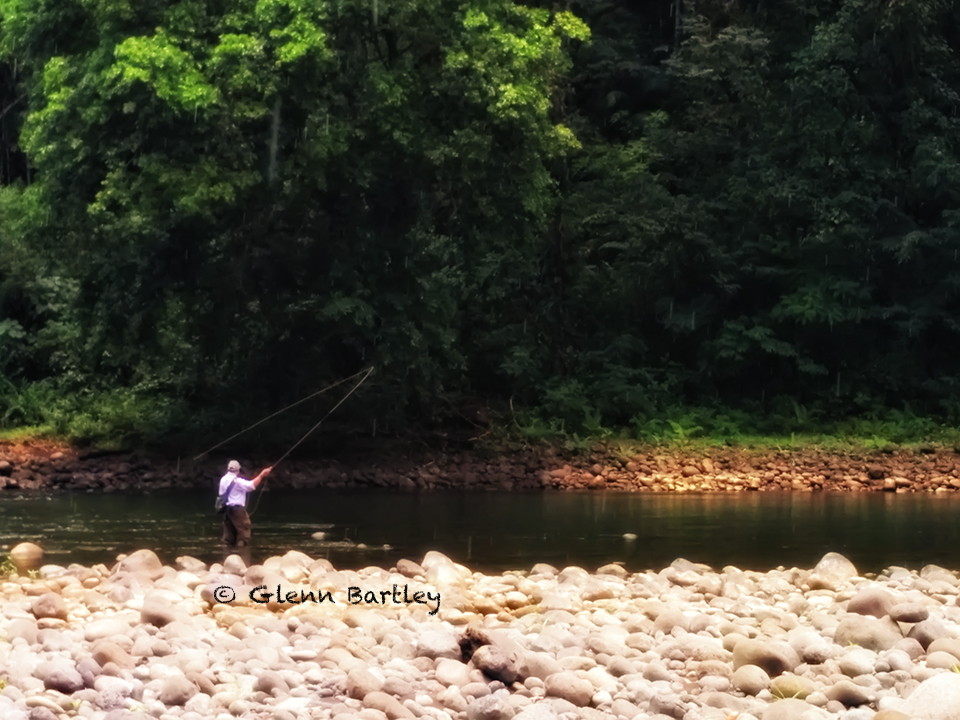
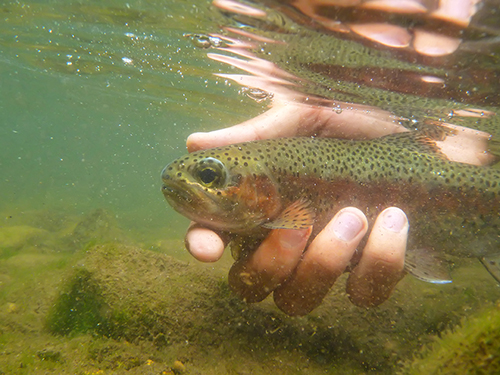
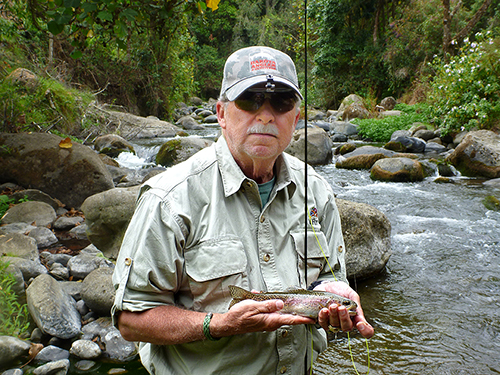
Costa Rica has become a popular destination for travelers from all over the world. The colorful quetzal, the loud antics of the macaws, and the comical toucans only begin to hint at the diversity found throughout this small country. We will return to the Land of Tranquillo – a land where the people are calm, chilled and unworried. A land of ecological diversity.
